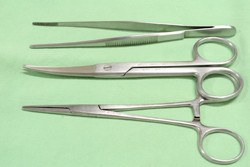Nano-structured antimicrobial materials
While silver coatings are available, their expense in combination with limitations related to effectiveness and durability make them unattractive. Copper nanoparticles (NPs) are a promising, cost-effective and environmentally friendly alternative. The EU-funded 'Nano-structured copper coatings, based on Vitolane technology, for antimicrobial applications' (CUVITO)(opens in new window) project bought together Mexican mining products and European product development to deliver a solution. The challenge was to find a way to retain the copper NPs in a structure without inhibiting antibacterial functionality but preventing leaching of copper. Partners exploited silsesquioxanes, compounds that form cage or ladder structures and confer hardness and abrasion resistance. They can be functionalised by choosing the appropriate side group, R. One of the unique processing features of the patented Vitolane technology is simple selection of R group. CUVITO used this feature to bond directly to copper NPs and resolve the bleaching issue. Scientists produced coated textile at lab scale and also produced copper NP-impregnated polymer fibres. Copper NP antimicrobial coatings were created from bases of polyurethane, epoxy, acrylic and polyester. Coatings were applied on aluminium and stainless steel. Antimicrobial testing in the presence of common hospital microbes demonstrated that the copper-containing fibres developed by CUVITO were equivalent or superior to silver-containing fibres. Work is ongoing to test the fibres in a medical environment. In summary, thanks to a close and fruitful collaboration, the consortium has developed a cost-effective method for manufacturing copper NPs exploiting a silsesquioxane structure formed using Vitolane technology. Partners are currently scaling up production to batch level. In the meantime, results have led to six patent applications, three in Mexico and three in Europe, and numerous products being prepared for commercial exploitation. CUVITO technology will provide a cost-effective and non-toxic alternative to silver antimicrobial coatings for health care and food applications. It will thus benefit both the European and Mexican economies as well as patients increasingly prone to infection during a stay in hospital.







